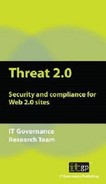There is no doubt that Web 2.0 technologies bring many advantages, not least the collaborative power of engaging with so many Web users extremely quickly. Tapscott and Williams, in their book, Wikinomics[67], describe the creation of a Wikipedia account of the London bombings which occurred in 2005:
By the end of the day, over twenty-five hundred users had created a comprehensive fourteen-page account of the event that was much more detailed than the information provided by any single news outlet.
The first edit was posted to Wikipedia 28 minutes after the first bomb exploded. The volume of contributors and immediacy of responses can be viewed on Wikipedia’s history page. The up-to-the-minute, eyewitness Wikipedia account of the London bombings, complete with on-the-spot photographs, is a testament to the power and enormous value that Web 2.0 technologies can provide.
However, the other side of the coin is that the free, uninhibited and undisciplined use of Web 2.0 technologies can pose serious risks. In addition to the risks of reputation damage and breaches of confidentiality, risks associated with Web 2.0 technologies also include hacking attacks and legal non-compliance.
Many hacking attacks can be prevented simply by ensuring well written code and incorporating security considerations as part of the Web software development cycle.
Website administrators and their employers will also need to gain sufficient understanding of the relevant copyright, privacy and data protection regulation to ensure legal compliance and to put themselves into a position to take appropriate, speedy action to deal with transgressions by users.
